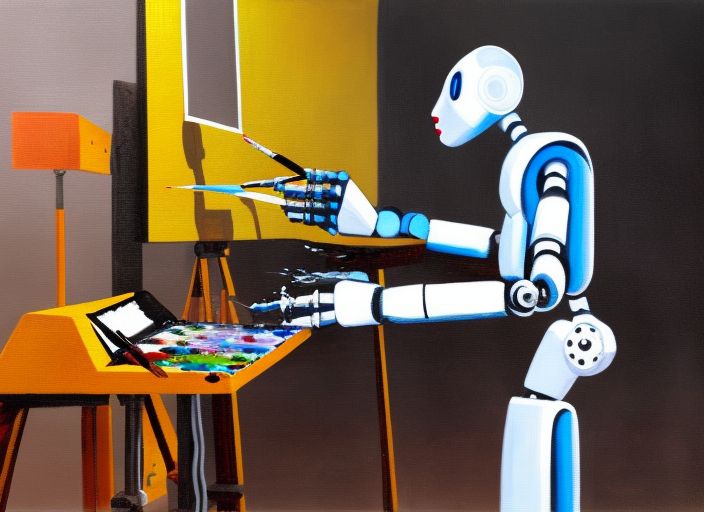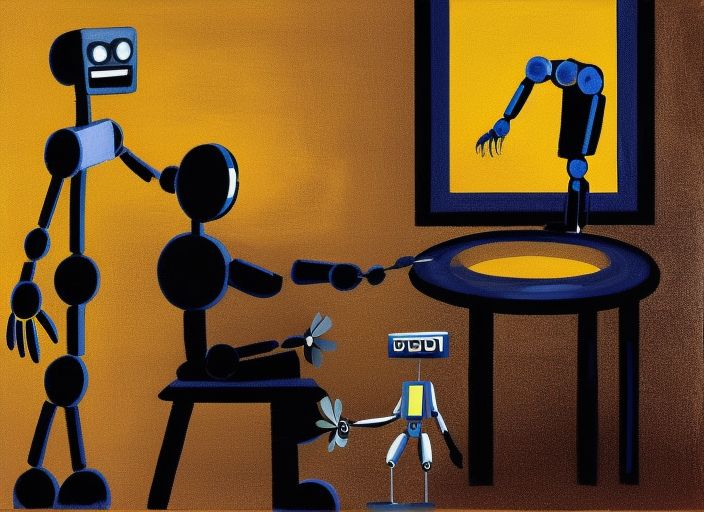Google introduced an AI model for illustrating news articles

In Brief
Google announces new AI model for producing high-quality visual summaries of news articles
Google has announced a new artificial intelligence (AI) model that it says can automatically generate “coherent and fluent” visual summaries of news articles. The technology giant says the model can help make information more accessible to users by generating “high-quality” visual summaries of long pieces of text.

The model is based on a deep learning algorithm known as a transformer, which is designed to “understand” the context of a sentence and then generate an illustration that retains the important information from the original text.
Google accomplishes the much more challenging task of comprehending the overall context of the entire text, in contrast to the currently popular text-to-image systems, which are based on a “frontal” depiction of the “what I see, I draw about” principle. Additionally, the choice of images is made to create a “picture as a whole” rather than individual statements and phrases (as practically everyone is doing right now). In other words, pictures are chosen for the entire article while taking contexts and meanings into mind.
Google says the model can generate summaries of multiple sentences from a news article and that it has been trained on a large dataset NewsStories, which contains almost 31 million articles, 22 million photographs, and 1 million videos hidden away in the bushes.
In this project, we are taking on a brand-new challenge: creating visual summaries, which are longer texts accompanied by a collection of images. By mastering two MIL (Multiple Instance Learning) subtasks, the aim is to maximize the semantic similarity between each article and the input photos.
The first step is to match the image to the complete article after it has been translated into the proper representations using both the language and image encoders.
The second step entails dividing a text article into separate sentences and encoding each sentence into a different representation. The objective is to optimize the mutual information, defined in terms of probability distributions, between image and text sequences. The greatest precision was obtained as a result.

In conclusion, this study makes a variety of contributions, from applications like automated narrative illustration to the challenging task of matching a story and a collection of illustrations. The company says the model can also be applied to other languages and that it is working on expanding the dataset to include articles from other sites.
Read more related articles:
Disclaimer
In line with the Trust Project guidelines, please note that the information provided on this page is not intended to be and should not be interpreted as legal, tax, investment, financial, or any other form of advice. It is important to only invest what you can afford to lose and to seek independent financial advice if you have any doubts. For further information, we suggest referring to the terms and conditions as well as the help and support pages provided by the issuer or advertiser. MetaversePost is committed to accurate, unbiased reporting, but market conditions are subject to change without notice.
About The Author
Damir is the team leader, product manager, and editor at Metaverse Post, covering topics such as AI/ML, AGI, LLMs, Metaverse, and Web3-related fields. His articles attract a massive audience of over a million users every month. He appears to be an expert with 10 years of experience in SEO and digital marketing. Damir has been mentioned in Mashable, Wired, Cointelegraph, The New Yorker, Inside.com, Entrepreneur, BeInCrypto, and other publications. He travels between the UAE, Turkey, Russia, and the CIS as a digital nomad. Damir earned a bachelor's degree in physics, which he believes has given him the critical thinking skills needed to be successful in the ever-changing landscape of the internet.
More articles

Damir is the team leader, product manager, and editor at Metaverse Post, covering topics such as AI/ML, AGI, LLMs, Metaverse, and Web3-related fields. His articles attract a massive audience of over a million users every month. He appears to be an expert with 10 years of experience in SEO and digital marketing. Damir has been mentioned in Mashable, Wired, Cointelegraph, The New Yorker, Inside.com, Entrepreneur, BeInCrypto, and other publications. He travels between the UAE, Turkey, Russia, and the CIS as a digital nomad. Damir earned a bachelor's degree in physics, which he believes has given him the critical thinking skills needed to be successful in the ever-changing landscape of the internet.






















































